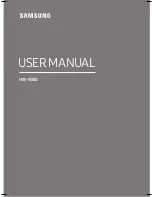
www.duralloy.net.au
|
1300 369 456
20
MULTIMIG 200 PFC MV
OWNER’S MANUAL
At the completion of each side motion, pause for a moment to
allow weld metal to build up at the edges, otherwise undercut
will form and too much metal will accumulate in the centre of
the weld. Figure 1-26 illustrates multi-run technique and Figure
1-27 shows the effects of pausing at the edge of weave and of
weaving too rapidly.
2. Vertical Down
The 6012 Stick electrode makes welding in this position
particularly easy. Use a 3.2mm electrode at 100 amps. The tip of
the electrode is held in light contact with the work and the speed
of downward travel is regulated so that the tip of the electrode
just keeps ahead of the slag. The electrode should point upwards
at an angle of about 45º.
3. Overhead Welds
Apart from the rather awkward position necessary, overhead
welding is not much more difficult that down hand welding.
Set up a specimen for overhead welding by first tacking a length
of angle iron at right angles to another piece of angle iron or a
length of waste pipe. Then tack this to the work bench or hold in
a vice so that the specimen is positioned in the overhead position
as shown in the sketch.
The electrode is held at 45º to the horizontal and tilted 10º in
the line of travel (Figure 1-28). The tip of the electrode may be
touched lightly on the metal, which helps to give a steady run. A
weave technique is not advisable for overhead fillet welds.
Use a 3.2mm E6013 Stick electrode at 100 amps, and deposit the
first run by simply drawing the electrode along at a steady rate.
You will notice that the weld deposit is rather convex, due to the
effect of gravity before the metal freezes.









































